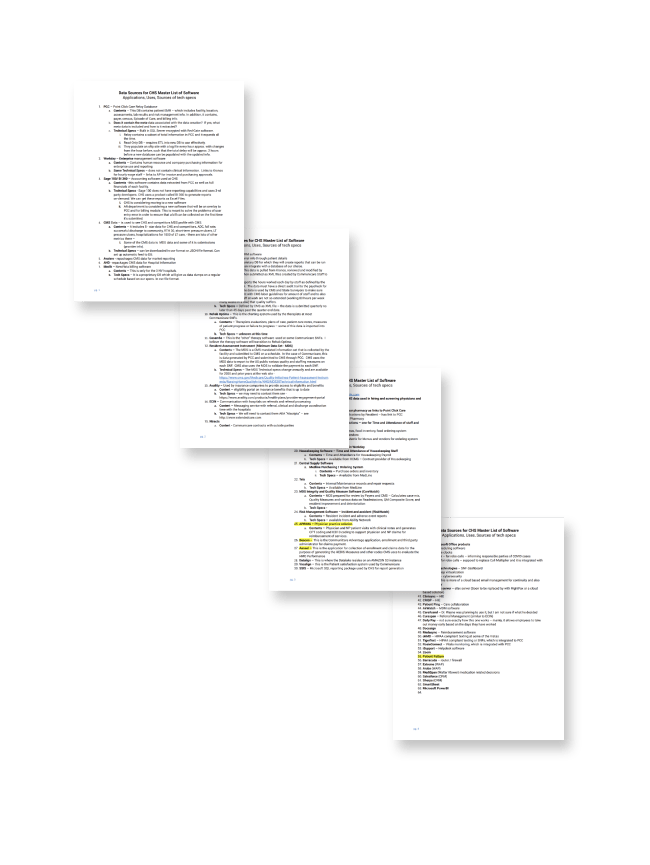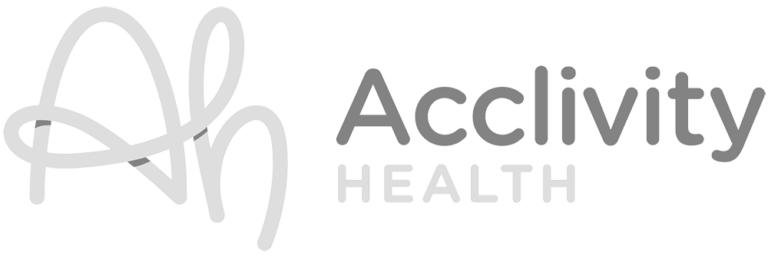Timeline
From technical debt to maximized revenue
Through continuous delivery and pragmatic consulting, we focused on what would bring the most value to our client over a series of nine months.
CommuniCare Advantage, a Medicare Advantage plan owned by the Communicare Family of companies (a $2B leader in the post acute space) was experiencing rapid growth through multiple acquisitions. With a mix of different technology systems and processes, this inherited complexity inflated their operational costs and also made them vulnerable to compliance issues. Over a period of time, their handle on revenue impact was apparent as they saw declining reimbursements while the cost of patient care kept rising. Our experienced team of technology and process experts helped them overcome the complexity to support their business needs.

The company was expanding beyond a traditional medicare advantage plan to also be an Accountable Care Organization (ACO). We worked to ensure that we understood their needs, providing solutions that would meet and exceed all of their requirements.
Our client was being weighed down by excessive technology solutions that were outdated and not meeting their growing needs. We worked to turn their technology ecosystem into a revenue driver rather than a cost center by consolidating and finding them the right partner to scale with.
By minimizing their technical debt and helping them choose a modern, scalable solution, we were able to ensure that our client has the modern UI and ongoing visibility into their data that they need to enhance their patient care and provider documentation, ensuring maximized reimbursements.

“Digital Scientists provided immense value to our plan administrators, providers, and patients. The team was able to come in and understand our core needs, while remaining product agnostic. They helped identify the technical debt and pitfalls, and to get us to a point of stabilization and growth.”
ROBERT HAGER
president of CommuniCare AdvantageCommuniCare Advantage, a Medicare Advantage plan owned by the Communicare Family of companies (a $2B leader in the post- acute space) was experiencing rapid growth through multiple acquisitions.
Timeline
From technical debt to maximized revenue
Through continuous delivery and pragmatic consulting, we focused on what would bring the most value to our client over a series of nine months.
Deliverables
Starting point
We ask the right questions
The product and solution architecture team from Digital Scientists approached our client’s issues with the deep desire to understand their problems, their ecosystem architecture, and the future state they need in order to help their growing business thrive.
We sought to understand the following questions:

User + system research
Insights from the key stakeholders
Before we began the technical ecosystem audit, we first wanted to hear from the executive team and the subject matter experts using the platforms.
From there, we compiled comprehensive insights of the current state of their ecosystem, as well as a butter understanding of the priority workflows a

From our client’s list of over 60 digital products, we were looking to identify the pivotal systems needed to meet the objectives of the business.
For each software program in use, we would analyze around each item:

Based upon the interviews, internal research for compliance, and landscape analysis, we were able to compile a clear diagram of the critical systems, with links to the dependencies. This was something our client has never been able to fully document and visualize in a comprehensive way. This ecosystem map drove internal alignment and provided visibility into all of their digital solutions. It also supported the identification of major areas of concern as well gaps in the data flows.
Landscape analysis
Which EHR ecosystem meets the complex needs of our partner?
The current SaaS products were not supporting all of our client’s needs. To help them find the right partner, we performed a high level, qualitative assessment of over a dozen Electronic Health Record (EHR) and clinical case management solutions based upon targeted criteria:
We researched each product ecosystem to see what might best serve the many needs of the company’s EHR and their case management solution. From there, we created the short list of EHR platform companies that would receive the Request for Proposal (RFP).









Request for proposal
Finding the right product strategy
To help our clients best decide the next platform that would meet their needs, we created a formal Request for Proposal (RFP) that we would send a selection of the chosen vendors that were identified during the landscape assessment.
When creating the RFP, we had to take into account the following:
We created a robust RFP but also a complimentary requirements document and a grading matrix that would ensure the best method of grading the RFP responses.
From there, we used a detailed grading matrix to ensure that we were fair and concise with the RFP responses. We managed all vendor communication, as well as in person/onsite selection presentations, and provided pricing analysis to best help our clients make an informed decision around the final selection. With the selection of a finalist, we were able to take an active approach on implementation and migration to this new platform.

reporting solution
Delivering a robust reporting solution through data integration


Once our client was able to define their largest and highest priority gap areas, we were able to work quickly to deliver them a robust reporting solution that would allow them to ensure compliance as well as proactively plan for growth. During this technical architecture consulting, we were already able to understand their different business and reporting requirements. The next step in this process was to gain access to all of their many data sources and Data Marts across their platform, including their:
Through our team of data scientists and API developers, we were able to provide a SQL database to our clients. Through PowerBI, we were able to bypass the need for an in house data analyst, alleviating roadblocks for the clinical team as well as providing more breathing room for the technology team. We worked with the client to combine, data scrub, and consolidate all of these data points into a single source of truth. Now, the client’s leadership team and clinical stakeholders are able to easily access their data at any given time, including:
This visibility into their data allows the leadership team, plan administrators, and providers the necessary clarity needed to remain compliant and to proactively meet the needs of their patients. This ensures that our clients are no longer at risk of noncompliance or leaving valuable claims reimbursements on the table.
We provided a single source of truth, through a Data Mart that ensures real-time visibility into data. This allows for proactive reporting to ensure ongoing compliance.
Through a repeatable, scientific method of product strategy, we were able to guide our client as they selected and migrated to a stable, modern EHR that integrates with their existing ecosystem and would ensure user (provider) adoption.
We were able to help our clients reduce their technical debt, removing unnecessary and outdated platforms, while ensuring their EHR would reduce under/missed billing through an intuitive user experience and workflows for their providers.
Are you ready to reduce risk, scale your business and unlock your next level of revenue growth?